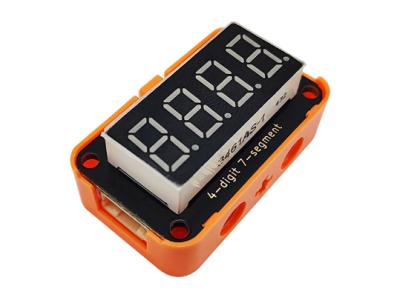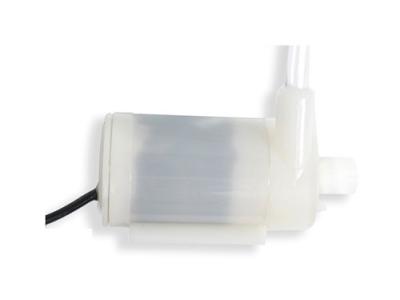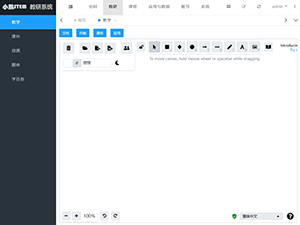EV3 直接命令 - 第 3 课 遥控车辆
移动电机是 EV3 的核心。机器人需要移动的能力,因此你需要知道它是如何完成的。请参阅文档 EV3 Firmware Developer Kit 中的第 4.9 部分,以获得与电机相关的操作的第一印象。几乎所有这些操作命令都以相同的两个参数开头:
-
LAYER:如果组合多个 EV3 brick 作为单个机器,则声明其中一个是主机,最多 3 个额外 brick 作为从机。然后将操作发送给主机,主机将其发送给从机。这就是 LAYER 的含义。Layer 0x|00| 是主机,layers 0x|01|,0x|02| 和 0x|03| 则是它的可选从机。在没有从机的一般情况下,我们设置 LAYER = 0x|00|。我们使用直接命令代码可以连接多个 EV3 设备。因此,我认为不需要不同的 LAYER 参数值。
-
NO 或 NOS:电机端口以字母 A,B,C 和 D 标识。在直接命令的层面,你可以通过数字命名它们,A = 0x|01|,B = 0x|02|,C = 0x|04| 和 D = 0x|08|。如果你将这些数字写为二进制表示法,则 A = 0b 0000 0001,B = 0b 0000 0010,C = 0b 0000 0100 和 D = 0b 0000 1000,你看,后半个字节可以解释为一系列的四个标志。你可以组合这些标志。如果你处理端口 A 和 C 的电机操作,则设置 NOS = 0x|05| 或 0b 0000 0101。如果参数名称为 NO,则只能处理单个电机端口。NOS是说,你可以处理一个或多个端口。
启动和停止电机
将一些电机插入你选择的端口,然后以全功率启动它们。这通过以下直接命令完成:
----------------------------------------------
\ len \ cnt \ty\ hd \op\la\no\power\op\la\no\
----------------------------------------------
0x|0D:00|2A:00|80|00:00|A4|00|0F|81:64|A6|00|0F|
----------------------------------------------
\ 13 \ 42 \no\ 0,0 \O \0 \a \ 100 \O \0 \a \
\ \ \ \ \u \ \l \ \u \ \l \
\ \ \ \ \t \ \l \ \t \ \l \
\ \ \ \ \p \ \ \ \p \ \ \
\ \ \ \ \u \ \ \ \u \ \ \
\ \ \ \ \t \ \ \ \t \ \ \
\ \ \ \ \_ \ \ \ \_ \ \ \
\ \ \ \ \P \ \ \ \S \ \ \
\ \ \ \ \o \ \ \ \t \ \ \
\ \ \ \ \w \ \ \ \a \ \ \
\ \ \ \ \e \ \ \ \r \ \ \
\ \ \ \ \r \ \ \ \t \ \ \
----------------------------------------------
一段时间之后,你,你的父母,兄弟姐妹或孩子会对全动力马达的声音感到紧张。如果你是一个爱好和平的人,你应该发送以下直接命令:
----------------------------------
\ len \ cnt \ty\ hd \op\la\no\br\
----------------------------------
0x|09:00|2A:00|00|00:00|A3|00|0F|00|
----------------------------------
\ 9 \ 42 \re\ 0,0 \O \0 \a \no\
\ \ \ \ \u \ \l \ \
\ \ \ \ \t \ \l \ \
\ \ \ \ \p \ \ \ \
\ \ \ \ \u \ \ \ \
\ \ \ \ \t \ \ \ \
\ \ \ \ \_ \ \ \ \
\ \ \ \ \S \ \ \ \
\ \ \ \ \t \ \ \ \
\ \ \ \ \o \ \ \ \
\ \ \ \ \p \ \ \ \
----------------------------------
我们看到了三个新操作:
-
opOutput_Power = 0x|A4|,参数是
- LAYER
- NOS
- POWER:指定输出功率 [-100 – 100 %](负值意味着相反的方向)
-
opOutput_Start = 0x|A6|,参数是
- LAYER
- NOS
-
opOutput_Stop = 0x|A3|,参数是
- LAYER
- NOS
- BRAKE:指定制动级别 [0:浮动,1:制动]。这不是被动制动器,其中电动机固定在其位置上。它是一个主动的,电机试图回到原来的位置,这需要能量!
通过这三个操作,我们可以启动和停止电机。我们还应该讨论另一个,它设定了极性。通常,电动机的运动以前后方向描述,并且使用正数和负数。如果我们的机器结构导致极性相反,则有一个操作,可以改变它:
- opOutput_Polarity = 0x|A7|,参数是
- LAYER
- NOS
- POLARITY:指定极性 [-1, 0, 1]
- -1:电机将向后运行
- 0:电机将反方向运行
- -1:电机将向前运行
定义速度而不是功率通常是更好的选择。幸运的是,乐高电机是固定的电机,我们可以通过以下操作轻松定义电机运动的恒定速度:
- opOutput_Speed = 0x|A5|,参数是
- LAYER
- NOS
- SPEED:指定输出速度 [-100 – 100 %](负值意味着相反的方向)
请构造一辆由两个电机驱动的车,一个用于左侧,另一个用于右侧。精心设计的例子如下:
- http://robotsquare.com/2015/10/06/explor3r-building-instructions
- http://robotsquare.com/wp-content/uploads/2013/10/45544_educator.pdf
- http://www.lego.com/en-gb/mindstorms/build-a-robot/track3r
- http://www.lego.com/en-gb/mindstorms/build-a-robot/robodoz3r
但一个简单的也将满足我们的需求。将右侧电机连接到端口 A,将左侧电机连接到端口 D,并发送以下直接命令:
-------------------------------------------
\ len \ cnt \ty\ hd \op\la\no\sp\op\la\no\
-------------------------------------------
0x|0C:00|2A:00|80|00:00|A5|00|09|3D|A6|00|09|
-------------------------------------------
\ 12 \ 42 \no\ 0,0 \O \0 \A \-3\O \0 \A \
\ \ \ \ \u \ \+ \ \u \ \+ \
\ \ \ \ \t \ \D \ \t \ \D \
\ \ \ \ \p \ \ \ \p \ \ \
\ \ \ \ \u \ \ \ \u \ \ \
\ \ \ \ \t \ \ \ \t \ \ \
\ \ \ \ \_ \ \ \ \_ \ \ \
\ \ \ \ \S \ \ \ \S \ \ \
\ \ \ \ \p \ \ \ \t \ \ \
\ \ \ \ \e \ \ \ \a \ \ \
\ \ \ \ \e \ \ \ \r \ \ \
\ \ \ \ \d \ \ \ \t \ \ \
-------------------------------------------
希望你的车辆以低速直行。使用上面的直接命令(opOutput_Stop)来停止它。
遥控车辆
现在是编写实际应用程序的时候了。用遥控 EV3 小车给你的朋友或孩子留下深刻印象吧!!!我们从一个简单的远程控制程序开始,并使用键盘方向键改变速度和方向。首先将新操作添加到 EV3 类,然后编写远程控制程序。像往常一样,我已经以 python3 完成了它:
#!/usr/bin/env python3
import curses
import ev3
def move(speed: int, turn: int) -> None:
global myEV3, stdscr
stdscr.addstr(5, 0, 'speed: {}, turn: {} '.format(speed, turn))
if turn > 0:
speed_right = speed
speed_left = round(speed * (1 - turn / 100))
else:
speed_right = round(speed * (1 + turn / 100))
speed_left = speed
ops = b''.join([
ev3.opOutput_Speed,
ev3.LCX(0), # LAYER
ev3.LCX(ev3.PORT_A), # NOS
ev3.LCX(speed_right), # SPEED
ev3.opOutput_Speed,
ev3.LCX(0), # LAYER
ev3.LCX(ev3.PORT_D), # NOS
ev3.LCX(speed_left), # SPEED
ev3.opOutput_Start,
ev3.LCX(0), # LAYER
ev3.LCX(ev3.PORT_A + ev3.PORT_D) # NOS
])
myEV3.send_direct_cmd(ops)
def stop() -> None:
global myEV3, stdscr
stdscr.addstr(5, 0, 'vehicle stopped ')
ops = b''.join([
ev3.opOutput_Stop,
ev3.LCX(0), # LAYER
ev3.LCX(ev3.PORT_A + ev3.PORT_D), # NOS
ev3.LCX(0) # BRAKE
])
myEV3.send_direct_cmd(ops)
def react(c):
global speed, turn
if c in [ord('q'), 27, ord('p')]:
stop()
return
elif c == curses.KEY_LEFT:
turn += 5
turn = min(turn, 200)
elif c == curses.KEY_RIGHT:
turn -= 5
turn = max(turn, -200)
elif c == curses.KEY_UP:
speed += 5
speed = min(speed, 100)
elif c == curses.KEY_DOWN:
speed -= 5
speed = max(speed, -100)
move(speed, turn)
def main(window) -> None:
global stdscr
stdscr = window
stdscr.clear() # print introduction
stdscr.refresh()
stdscr.addstr(0, 0, 'Use Arrows to navigate your EV3-vehicle')
stdscr.addstr(1, 0, 'Pause your vehicle with key <p>')
stdscr.addstr(2, 0, 'Terminate with key <q>')
while True:
c = stdscr.getch()
if c in [ord('q'), 27]:
react(c)
break
elif c in [ord('p'),
curses.KEY_RIGHT, curses.KEY_LEFT, curses.KEY_UP, curses.KEY_DOWN]:
react(c)
speed = 0
turn = 0
myEV3 = ev3.EV3(protocol=ev3.BLUETOOTH, host='00:16:53:42:2B:99')
stdscr = None
# ops = opOutput_Polarity + b'\x00' + LCX(PORT_A + PORT_D) + LCX(-1)
# myEV3.send_direct_cmd(ops)
curses.wrapper(main)
一些说明:
- 我使用模块 curses 来实现键盘事件的事件处理程序。
- 方法 wrapper 控制资源键盘和终端。它改变终端的行为,创建一个窗口对象并调用函数 main。
- 函数 main 将一些文本写入终端,然后等待键事件(方法 getch)。
- 如果其中一个相关键命中,则调用函数 react,键 <q> 或 <Ctrl-c> 打破循环。
- 变量 speed 定义了更快轮子的速度。
- 变量 turn 定义方向。值 0 表示直行,正值表示左转,负值表示右转。转弯的绝对值大意味着转弯的半径小。最大值+200 和最小值 -200 意味着在原地盘旋。在下一课中,我们将回到驱动转弯的这个定义。
- 我在第 5 步改变了 speed 和 turn。这似乎是精确度和反应速度之间的良好折衷。
- 也许,你的车辆结构需要改变两个车轮的极性。这由注释掉的代码完成。
- 右轮连接到端口 A,左侧连接到端口 D。
- 对于低速,由于四舍五入到整数值,转弯半径的精度变得更差。
译者注:
- 这个程序只能在终端下执行。译者本人使用 PyCharm 完成相关程序的编写。在 PyCharm 中执行上述程序,将报出如下的错误:
/usr/bin/python3.5 /home/hanpfei0306/data/MyProjects/wolfcs-tools/ev3.py
Traceback (most recent call last):
File "/home/hanpfei0306/data/MyProjects/wolfcs-tools/ev3.py", line 783, in <module>
remote_control_test()
File "/home/hanpfei0306/data/MyProjects/wolfcs-tools/ev3.py", line 774, in remote_control_test
curses.cbreak()
_curses.error: cbreak() returned ERR
- Python NCurses API 用法的相关文档:curses — Terminal handling for character-cell displays,Curses Programming with Python,可爱的 Python:Curses 编程。
中断作为一种设计理念
上一课,我们将中断与不耐烦和乖巧的人进行了比较。本课程表明,这种行为恰恰是一种切实可行的设计理念。
遥控程序发送无限的命令,如果不被下一个命令中断,它将永久地移动电机。控制驾驶的人类希望纠正立即生效。这是绝对正确的,新命令会中断旧命令。
该设计概念的另一个积极方面是直接命令的执行时间短。它们不耗时。电机的运动持续很长时间,但是当电机获得新参数时,直接命令已经执行完成。控制立即返回,程序是自由的,以执行下一个任务。资源 EV3 设备未被阻塞,它可用于下一个直接命令。
你已经看到了如何编码远程控制的中断过程。中心部分是一个请求关键事件的循环。如果相关的按键事件发生,则调用一个函数,该函数更改运动的参数并向 EV3 设备发送直接命令。
当我们在 c’’(上一课)中玩三合一时,我们避免了中断。我们有一个固定的所有音调时间表。我们的意见是,每次中断都会扰乱计划,需要加以防范。在绘制三角形时,我们已经讨论了两种时序选择,通过直接命令或本地程序。也可以使用本地程序中的调度并使用中断来播放三元组。这是获得正确时序的替代方法:
#!/usr/bin/env python3
import ev3, time
my_ev3 = ev3.EV3(protocol=ev3.BLUETOOTH, host='00:16:53:42:2B:99')
ops = b''.join([
ev3.opUI_Write,
ev3.LED,
ev3.LED_RED,
ev3.opSound,
ev3.TONE,
ev3.LCX(1),
ev3.LCX(262),
ev3.LCX(0)
])
my_ev3.send_direct_cmd(ops)
time.sleep(0.5)
ops = b''.join([
ev3.opUI_Write,
ev3.LED,
ev3.LED_GREEN,
ev3.opSound,
ev3.TONE,
ev3.LCX(1),
ev3.LCX(330),
ev3.LCX(0)
])
my_ev3.send_direct_cmd(ops)
time.sleep(0.5)
ops = b''.join([
ev3.opUI_Write,
ev3.LED,
ev3.LED_RED,
ev3.opSound,
ev3.TONE,
ev3.LCX(1),
ev3.LCX(392),
ev3.LCX(0)
])
my_ev3.send_direct_cmd(ops)
time.sleep(0.5)
ops = b''.join([
ev3.opUI_Write,
ev3.LED,
ev3.LED_RED_FLASH,
ev3.opSound,
ev3.TONE,
ev3.LCX(1),
ev3.LCX(523),
ev3.LCX(0)
])
my_ev3.send_direct_cmd(ops)
time.sleep(2)
ops = b''.join([
ev3.opUI_Write,
ev3.LED,
ev3.LED_GREEN,
ev3.opSound,
ev3.BREAK
])
my_ev3.send_direct_cmd(ops)
此版本还实现了固定的调度,但时间发生在程序中而不是 EV3 设备上(在直接命令中)。同样,这有一定的优势,它不阻塞 EV3 设备。只要我们一次只执行一个任务,阻塞就无关紧要了。如果我们试图结合独立的声音和点击驱动,且并行执行任务,则本地时序和中断是必须的。
如果我们在上面的程序中设置 sync_mode == SYNC,数据流量会增长,但我们不会听到任何差异。值得反思的是,该程序同步运行,因为没有直接命令是耗时的。sync_mode == ASYNC 或 sync_mode == STD 是为异步执行设计的,但我们也可以使用这些设置编写同步执行代码。异步执行仅在直接命令耗时(时间由直接命令完成)且本地程序不等待直接命令结束时。中断有助于避免耗时的直接命令,并且是同步执行。
继承 EV3
到目前为止,我们直接在我们的程序中编写了操作。这需要封装和抽象。我想特化类,一个用于带两个驱动轮的车辆,一个用于音调和音乐等等。设计应该允许它们平并行使用。我的解决方案是大量的 EV3 类的子类,它们都与同一个 EV3 设备通信。这就是说,它们必须共享资源。为了实现这一点,我修改了 EV3 类的构造函数:
| __init__(self, protocol:str=None, host:str=None, ev3_obj=None)
| Establish a connection to a LEGO EV3 device
|
| Keyword Arguments (either protocol and host or ev3_obj):
| protocol: None, 'Bluetooth', 'Usb' or 'Wifi'
| host: None or mac-address of the LEGO EV3 (f.i. '00:16:53:42:2B:99')
| ev3_obj: None or an existing EV3 object (its connections will be used)
代码是:
class EV3:
def __init__(self, protocol: str=None, host: str=None, ev3_obj=None):
assert ev3_obj or protocol, \
'Either protocol or ev3_obj needs to be given'
if ev3_obj:
assert isinstance(ev3_obj, EV3), \
'ev3_obj needs to be instance of EV3'
self._protocol = ev3_obj._protocol
self._device = ev3_obj._device
self._socket = ev3_obj._socket
elif protocol:
assert protocol in [BLUETOOTH, WIFI, USB], \
'Protocol ' + protocol + 'is not valid'
self._protocol = None
self._device = None
self._socket = None
if protocol == BLUETOOTH:
assert host, 'Protocol ' + protocol + 'needs host-id'
self._connect_bluetooth(host)
elif protocol == WIFI:
self._connect_wifi()
elif protocol == USB:
self._connect_usb()
self._verbosity = 0
self._sync_mode = STD
self._msg_cnt = 41
一些注解:
- 有两种创建类 EV3 的新实例的方式:
- 和以前一样,使用参数 protocol 和 host 调用构造函数以获取新连接。
- 另一种方法是使用现有的 EV3 对象作为参数 ev3_obj 调用它,使用其中的连接。
- 这不仅限于连接。对于将来的扩展,我们可以共享任何资源。
- 每个类都有自己的 _verbosity 和 _sync_mode。这是 OK 的,但我们使消息计数器 _msg_cnt 成为一个类属性:
class EV3:
_msg_cnt = 41
考虑到这一点,我编写了类 TwoWheelVehicle,这里是它的构造函数:
class TwoWheelVehicle(ev3.EV3):
def __init__(
self,
protocol: str=None,
host: str=None,
ev3_obj: ev3.EV3=None
):
super().__init__(protocol=protocol, host=host, ev3_obj=ev3_obj)
self._polarity = 1
self._port_left = ev3.PORT_D
self._port_right = ev3.PORT_A
我添加了两个方法:
def move(self, speed: int, turn: int) -> None:
assert self._sync_mode != ev3.SYNC, "no unlimited operations allowed in sync_mode SYNC"
assert isinstance(speed, int), "speed needs to be an integer value"
assert -100 <= speed and speed <= 100, "speed needs to be in range [-100 - 100]"
assert isinstance(turn, int), "turn needs to be an integer value"
assert -200 <= turn and turn <= 200, "turn needs to be in range [-200 - 200]"
if self._polarity == -1:
speed *= -1
if self._port_left < self._port_right:
turn *= -1
if turn > 0:
speed_right = speed
speed_left = round(speed * (1 - turn / 100))
else:
speed_right = round(speed * (1 + turn / 100))
speed_left = speed
ops = b''.join([
ev3.opOutput_Speed,
ev3.LCX(0), # LAYER
ev3.LCX(PORT_A), # NOS
ev3.LCX(speed_right), # SPEED
ev3.opOutput_Speed,
ev3.LCX(0), # LAYER
ev3.LCX(PORT_D), # NOS
ev3.LCX(speed_left), # SPEED
ev3.opOutput_Start,
ev3.LCX(0), # LAYER
ev3.LCX(PORT_A + PORT_D) # NOS
])
self.send_direct_cmd(ops)
和
def stop(self, brake: bool=False) -> None:
assert isinstance(brake, bool), "brake needs to be a boolean value"
if brake:
br = 1
else:
br = 0
ops_stop = b''.join([
ev3.opOutput_Stop,
ev3.LCX(0), # LAYER
ev3.LCX(self._port_left + self._port_right), # NOS
ev3.LCX(br) # BRAKE
])
self.send_direct_cmd(ops)
我们需要三个属性:
@property
def polarity(self):
return self._polarity
@polarity.setter
def polarity(self, value: int):
assert isinstance(value, int), "polarity needs to be of type int"
assert value in [1, -1], "allowed polarity values are: -1 or 1"
self._polarity = value
@property
def port_right(self):
return self._port_right
@port_right.setter
def port_right(self, value: int):
assert isinstance(value, int), "port needs to be of type int"
assert value in [ev3.PORT_A, ev3.PORT_B, ev3.PORT_C, ev3.PORT_D], "value is not an allowed port"
self._port_right = value
@property
def port_left(self):
return self._port_left
@port_left.setter
def port_left(self, value: int):
assert isinstance(value, int), "port needs to be of type int"
assert value in [ev3.PORT_A, ev3.PORT_B, ev3.PORT_C, ev3.PORT_D], "value is not an allowed port"
self._port_left = value
就是这样,我们有了一个新类 TwoWheelVehicle,它具有这样的 API:
Help on module ev3_vehicle:
NAME
ev3_vehicle - EV3 vehicle
CLASSES
ev3.EV3(builtins.object)
TwoWheelVehicle
class TwoWheelVehicle(ev3.EV3)
| ev3.EV3 vehicle with two drived Wheels
|
| Method resolution order:
| TwoWheelVehicle
| ev3.EV3
| builtins.object
|
| Methods defined here:
|
| __init__(self, protocol:str=None, host:str=None, ev3_obj:ev3.EV3=None)
| Establish a connection to a LEGO EV3 device
|
| Keyword Arguments (either protocol and host or ev3_obj):
| protocol
| BLUETOOTH == 'Bluetooth'
| USB == 'Usb'
| WIFI == 'Wifi'
| host: mac-address of the LEGO EV3 (f.i. '00:16:53:42:2B:99')
| ev3_obj: an existing EV3 object (its connections will be used)
|
| move(self, speed:int, turn:int) -> None
| Start unlimited movement of the vehicle
|
| Arguments:
| speed: speed in percent [-100 - 100]
| > 0: forward
| < 0: backward
| turn: type of turn [-200 - 200]
| -200: circle right on place
| -100: turn right with unmoved right wheel
| 0 : straight
| 100: turn left with unmoved left wheel
| 200: circle left on place
|
| stop(self, brake:bool=False) -> None
| Stop movement of the vehicle
|
| Arguments:
| brake: flag if activating brake
|
| ----------------------------------------------------------------------
| Data descriptors defined here:
|
| polarity
| polarity of motor rotation (values: -1, 1, default: 1)
|
| port_left
| port of left wheel (default: PORT_D)
|
| port_right
| port of right wheel (default: PORT_A)
|
| ----------------------------------------------------------------------
| Methods inherited from ev3.EV3:
|
| __del__(self)
| closes the connection to the LEGO EV3
|
| send_direct_cmd(self, ops:bytes, local_mem:int=0, global_mem:int=0) -> bytes
| Send a direct command to the LEGO EV3
|
| Arguments:
| ops: holds netto data only (operations), the following fields are added:
| length: 2 bytes, little endian
| counter: 2 bytes, little endian
| type: 1 byte, DIRECT_COMMAND_REPLY or DIRECT_COMMAND_NO_REPLY
| header: 2 bytes, holds sizes of local and global memory
|
| Keyword Arguments:
| local_mem: size of the local memory
| global_mem: size of the global memory
|
| Returns:
| sync_mode is STD: reply (if global_mem > 0) or message counter
| sync_mode is ASYNC: message counter
| sync_mode is SYNC: reply of the LEGO EV3
|
| wait_for_reply(self, counter:bytes) -> bytes
| Ask the LEGO EV3 for a reply and wait until it is received
|
| Arguments:
| counter: is the message counter of the corresponding send_direct_cmd
|
| Returns:
| reply to the direct command
|
| ----------------------------------------------------------------------
| Data descriptors inherited from ev3.EV3:
|
| __dict__
| dictionary for instance variables (if defined)
|
| __weakref__
| list of weak references to the object (if defined)
|
| sync_mode
| sync mode (standard, asynchronous, synchronous)
|
| STD: Use DIRECT_COMMAND_REPLY if global_mem > 0,
| wait for reply if there is one.
| ASYNC: Use DIRECT_COMMAND_REPLY if global_mem > 0,
| never wait for reply (it's the task of the calling program).
| SYNC: Always use DIRECT_COMMAND_REPLY and wait for reply.
|
| The general idea is:
| ASYNC: Interruption or EV3 device queues direct commands,
| control directly comes back.
| SYNC: EV3 device is blocked until direct command is finished,
| control comes back, when direct command is finished.
| STD: NO_REPLY like ASYNC with interruption or EV3 queuing,
| REPLY like SYNC, synchronicity of program and EV3 device.
|
| verbosity
| level of verbosity (prints on stdout).
从现在开始,当我们使用两个驱动车轮移动车辆时,我们将使用ClassWheelVehicle。实际上这不仅仅是一个练习,而是一个真实的东西,但下一课,我们将为这个类添加功能。你可能会问,如果努力和利益真的是平衡的话。但是看,我们的程序变短了:
#!/usr/bin/env python3
import curses
import ev3, ev3_vehicle
def react(c):
global speed, turn, my_vehicle
if c in [ord('q'), 27, ord('p')]:
my_vehicle.stop()
return
elif c == curses.KEY_LEFT:
turn += 5
turn = min(turn, 200)
elif c == curses.KEY_RIGHT:
turn -= 5
turn = max(turn, -200)
elif c == curses.KEY_UP:
speed += 5
speed = min(speed, 100)
elif c == curses.KEY_DOWN:
speed -= 5
speed = max(speed, -100)
stdscr.addstr(5, 0, 'speed: {}, turn: {} '.format(speed, turn))
my_vehicle.move(speed, turn)
def main(window) -> None:
global stdscr
stdscr = window
stdscr.clear() # print introduction
stdscr.refresh()
stdscr.addstr(0, 0, 'Use Arrows to navigate your EV3-vehicle')
stdscr.addstr(1, 0, 'Pause your vehicle with key <p>')
stdscr.addstr(2, 0, 'Terminate with key <q>')
while True:
c = stdscr.getch()
if c in [ord('q'), 27]:
react(c)
break
elif c in [ord('p'),
curses.KEY_RIGHT, curses.KEY_LEFT, curses.KEY_UP, curses.KEY_DOWN]:
react(c)
speed = 0
turn = 0
my_vehicle = ev3_vehicle.TwoWheelVehicle(protocol=ev3.BLUETOOTH, host='00:16:53:42:2B:99')
stdscr = None
curses.wrapper(main)
如果你下载了 ev3-python3 的模块 ev3_vehicle.py,你需要以两个额外的参数 radius_wheel和 tread 调用 TwoWheelVehicle 的构造函数。目前你可以将它们设置为任何正值。
结论
现在我们知道了,如何移动电机,我们获得了两个重要设计概念的经验,即中断和子类化。此外我们编写的东西像个真正的应用程序了,一个车辆的遥控器。
我希望,你的遥控器工作良好,并使你成为一个技术明星。我们即将结束本课程。浏览文档 EV3 Firmware Developer Kit 告诉您,移动电机存在许多额外的操作。其中大多数是为了精确,同步和平滑的运动。这将是我们下一课的主题。我希望能再次见到你。
链接:https://blog.csdn.net/tq08g2z/article/details/83794204
涨知识
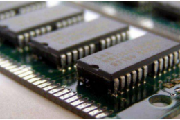
寄存器
寄存器的功能是存储二进制代码,它是由具有存储功能的触发器组合起来构成的。一个触发器可以存储1位二进制代码,故存放n位二进制代码的寄存器,需用n个触发器来构成。
评论:
学完EV3/SPIKE相关课程后接着学什么?
应该有不少给孩子报了EV3/SPIKE兴趣班的家长们,对孩子后面应该学什么是没有明确认知的吧,本文来探讨下后续学什么和怎么学。

Scratch 3.0连接EV3
本文介绍如何在Scratch中对EV3机器人进行开发。

Arduino 高级编程:控制乐高EV3马达
本文介绍一种使用Arduino开发板控制乐高EV3马达的方法。

Java 机器人编程入门手册(四)
在这一章中,你将学习一组传感器,它们被用来执行有根据的动作。
Java 机器人编程入门手册(三)
在本章中,您将学习启发式搜索策略背后的基本思想以及如何实现爬山算法,这是 leJOS EV3 中最典型的启发式方法之一。
Java 机器人编程入门手册(二)
这一章向你介绍了在莱霍斯 EV3 使用的笛卡尔坐标系的基础知识。它还教你如何在导航课程中应用编程方法来控制轮式车辆,以便在二维平面中用坐标描绘出预定义的路径。
Java 机器人编程入门手册(一)
本章提供了如何使用乐高 MindStorm EV3 公司建立 Java 机器人编程环境的分步指南,包括乐高 MindStorm EV3 的基本概述和leJOS-EV3的介绍。
乐高EV3遥控车搭建与编程指南
乐高EV3遥控车:从搭建到编程的全面指南
M5 EV3电机底座
Base X 是一款兼容乐高 EV3 电机的专用底座,可同时接入 4 路(RJ11)乐高电机,支持角度 / 速度的读取和控制,完美兼容原有电机功能。
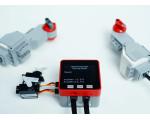
乐高EV3 Java固件leJOS
leJOS是Lego Mindstorms可编程砖的固件替代品。 该软件的不同变体支持原始机器人发明系统,NXT和EV3。




